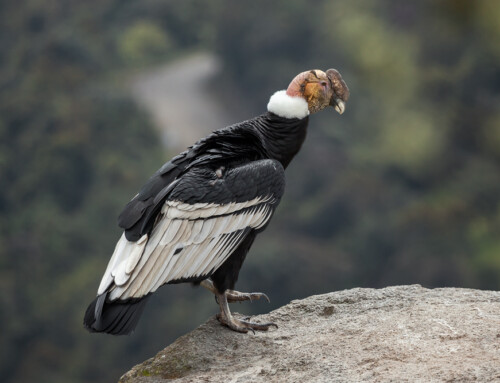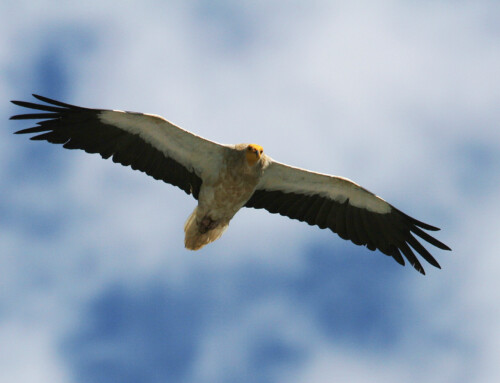The importance of censuses for assessing change in seabird populations
As an island nation, the UK’s links to the sea and its inhabitants have always been strong. With a constant connection between the land and the rolling waves, it is no surprise that seabirds have been, and still are, the muse for both the arts and sciences alike. However, it is no secret that some resident breeding seabird populations are under increasing strain.
Since 1986, annual monitoring of seabird colonies has been conducted by the Seabird Monitoring Programme (SMP). This programme is a partnership of 19 organisations and is coordinated by the Joint Nature Conservation Committee (JNCC). Seabird abundance and breeding success data are collected from a sample of colonies across Britain and Ireland, allowing the conservation status of several species to be assessed on an annual basis. These data are collected by both contract surveyors and volunteers. Recent estimates show that breeding success is decreasing for many species and, in some cases, declines have been considerable e.g. Arctic Skua, Stercorarius parasiticus, breeding numbers are estimated to have declined by over 60% in the last 15 years.

Regular counts at a sample of colonies provide robust trends, which help highlight problems, but we also require entire population censuses to add context and help to identify why changes might be happening. There have been three censuses in the past: Operation Seafarer (1969-70), Seabird Colony Register (1985-88) and Seabird 2000 (1998-2002). In 2015, work began on the 4th breeding seabird census for Britain and Ireland, Seabirds Count. The census was developed by the SMP partnership and is coordinated by JNCC and is likely to be completed at the end of the 2019 breeding season. The aim is to gain a better understanding of how our seabird populations are changing and give an indication of what might be the causative factors or pressures driving these trends.
The mounting pressures of climate change, fishing (both direct and indirect impacts), predation from invasive species and the ever-growing concern over plastic pollution, are all potential drivers of the declines seen in some species. To reach confident conclusions on how these pressures act upon seabirds requires long term data sets. Having both annual monitoring data and periodic censuses, gives a unique perspective on both the yearly variation and long-term changes we see in our seabird populations. Both have been used to explore the connections between potential pressures and some seabird species. For example, data from all three completed censuses fed into a study looking at the resilience of British and Irish seabirds in the 20th century and annual monitoring data from the Isle of May have helped to understand the link between fishing and oceanographic change, and the declines seen in the local Kittiwake, Rissa tridactyla, population. However, there are still more questions to be investigated.
Responses to potential pressures are complex and can be species and even colony specific. Recent counts suggest Gannets, Morus bassanus, are increasing in number at an impressive rate, 34% between the two gannet censuses in 2003-04 and 2013-14. Fulmars, Fulmarus glacialis, however, which have historically done well (77% increase in breeding numbers between the 1969-70 and 1985-88 censuses), are estimated to have declined 33% in the last 15 years. The story is not always consistent between countries even for the same species, for example Common Tern, Sterna hirundo breeding numbers, which have been showing worrying declines in Scotland, have been relatively stable in both England and Wales and appear to be on the increase in the Republic of Ireland. Variability also occurs at a regional level, e.g. Razorbill, Alca torda breeding abundance has declined on both Fair Isle and Handa but has increased at Fowlsheugh SPA and on the Isle of May.

By taking stock of our seabirds at a national scale, we can test the accuracy of SMP annual monitoring trends. Additionally, conducting periodic censuses also gives us the opportunity to understand how breeding seabird populations might be changing on a spatial scale. This is especially important when considering inland and urban breeding species, which are rarely monitored annually.
The Seabird 2000 census surveyed inland sites and urban nesting gull colonies, giving insight into how important these habitats were to breeding seabirds. Unfortunately, the previous two censuses were unable to attain the same level of coverage, meaning comparative analyses on whether these populations have changed could not be made. Seabirds Count aims to cover these inland and urban sites once again. The intention will be to gain a much clearer picture on how populations of species that utilise inland and urban nesting areas are faring, which becomes even more important when considering that coastal nesting numbers of these species are declining.

The Seabirds Count census will provide essential information on our internationally important breeding seabird populations. Such knowledge will deliver greater insight into the relationships between our seabird populations and the pressures they face, ultimately allowing mitigation of their effects. However, the census is no small task – with over 10,000 sites and 25 species to survey, we need all the help we can get. If you think you could spare some time to survey a site (or a few!), please get in touch via SeabirdsCountCoordinator@jncc.gov.uk. You can also follow the progress of the census by following @JNCC_UKseabirds on Twitter and by using #SeabirdsCount.
Further reading
Grandgeorge, M., Wanless, S., Dunn, T.E., Maumy, M., Beaugrand, G. & Grémillet, D. 2008. Resilience of the British and Irish seabird community in the twentieth century. Aquatic Biology 4(2): 187-199.
Frederiksen, M., Wanless, S., Harris, M.P., Rothery, P. & Wilson, L.J. 2004. The role of industrial fisheries and oceanographic change in the decline of North Sea black‐legged kittiwakes. Journal of Applied Ecology 41(6): 1129-1139.
Image credit
Featured image: Fulmars, Fulmarus glacialis © Mark Lewis
Blog posts express the views of the individual author(s) and not those of the BOU.
If you want to write about your research in #theBOUblog, then please see here.





